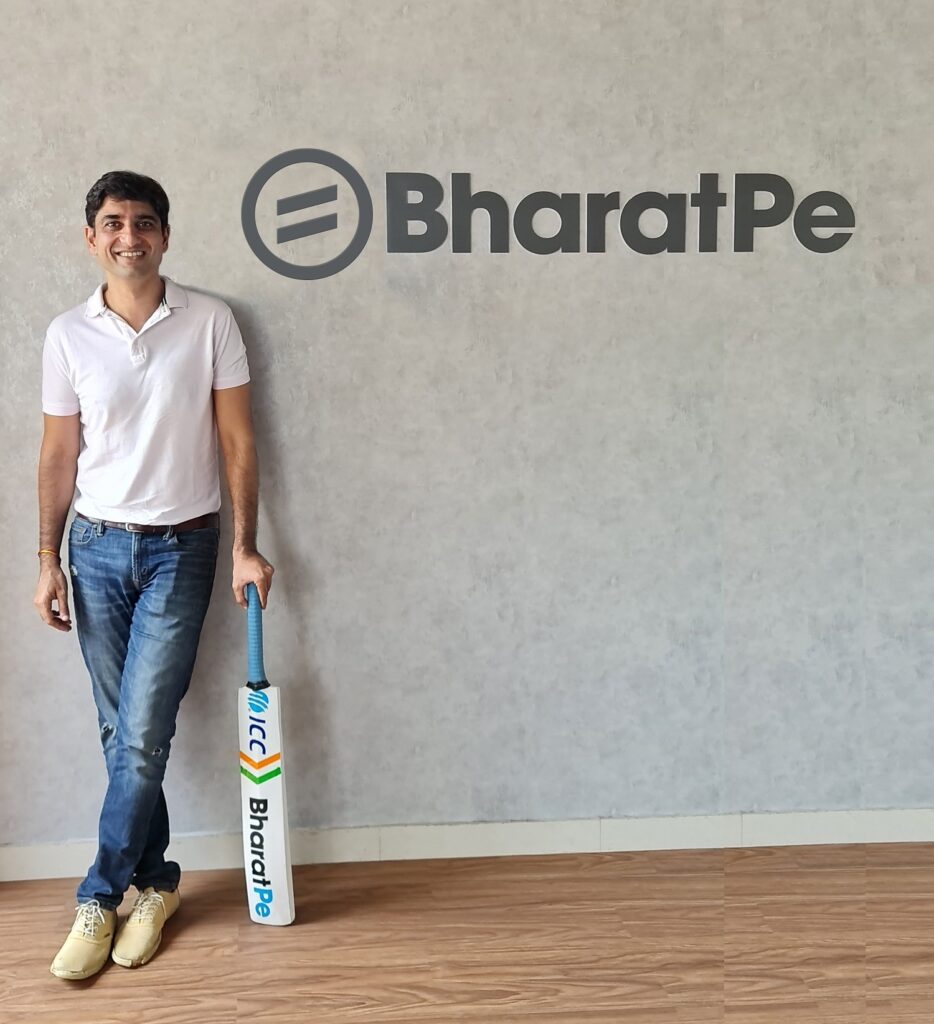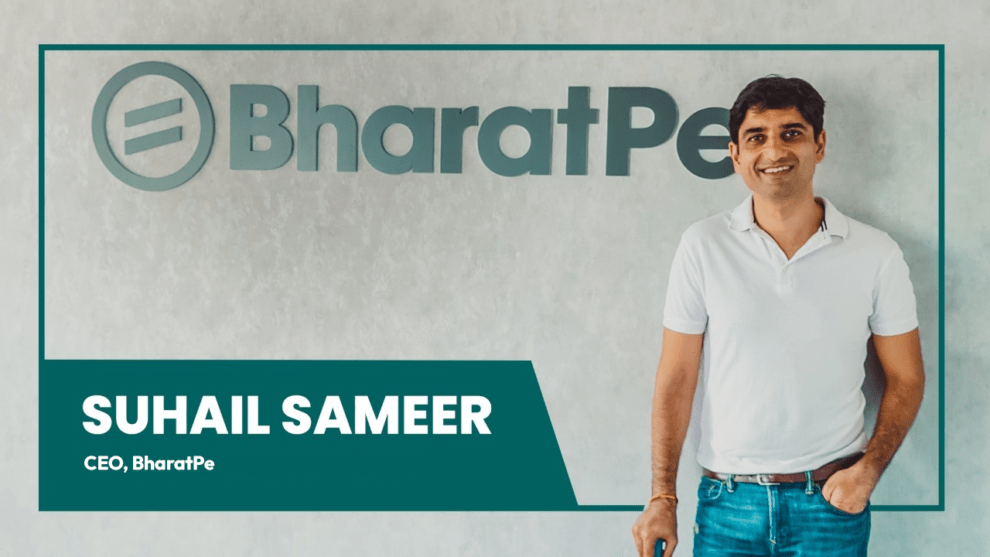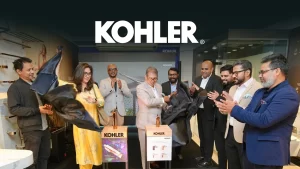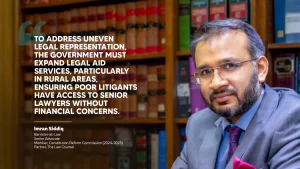1. Let’s start with a brief introduction to your academic background and childhood.
I was born in Kashmir, and I spent my first 8-9 years there, and later we moved out. In most of my childhood, I moved to various places in the country as my father was a part of the SBI international team, and he had to move places because of his role.
Speaking of my education, I did my engineering from Delhi College of Engineering, New Delhi and joined McKinsey, after completing my MBA from Indian Institute of Management, Lucknow. McKinsey is by definition, a very global organization. Over the 8 years that I spent at McKinsey, I was lucky enough to work across the world – I worked not only in India, but also in Southeast Asia, a bit in South Africa, and parts of my time was spent in Europe and Australia.
I always wanted to end up in India permanently as it is a land of crazy opportunities but working outside the country enabled me to see various opportunities at play. When I left McKinsey, I had been bitten by the entrepreneurial bug. I set up a FMCG business, established an early-stage fund, and ran a few other businesses, and as life would have it, it turned into a listed company called CESC venture. It was exciting till then, but once the business got listed, my enjoyment at work waned as my focus had to shift from building a business to managing a conglomerate.
When you are managing a conglomerate, you get tied to board meetings, business reviews, etc. This is good if it takes 20% of your days’ time, but tends to be non-exciting if this takes up the majority of your time. After I moved out of the conglomerate, I got back in the building mode at BharatPe. When I joined, the business was already launched, and was doing well, but was still very nascent. Two of my close friends were building the business and I joined them to significantly fast-track the growth, and launch new products and services.
2. You had a very successful career. So, what was the driving force that moved you to pursue the career of becoming an entrepreneur, which is a little risky in comparison to your very successful established life career?
I think you do not choose entrepreneurship, but instead, it is entrepreneurship that chooses you!
The journey with McKinsey was filled with a lot of excitement, and for 8 years at McKinsey, I had a great time and enjoyed the new challenges that came my way. Looking back, I do not think I could do what I do today if it was not for McKinsey. But I think one of my perennial struggles at McKinsey was that I was only advising people- I was not building what I was saying. And at one point, when the dilemma became too much, I said to myself, it’s time to take up an operating role. My first entrepreneurial gig, which was to build the FMCG business and launch a couple of other brands, was purely accidental.
When I joined RP-Sanjiv Goenka Group, Sanjiv (Mr. Goenka), who I always consider as my mentor, asked me, ‘Would you like to run an existing business? Or would you like to build something from scratch?’ I chose the latter as I felt like starting from scratch was just a lot more exciting. This is because you start with a clean slate and build the team as you want. This is how my journey in the FMCG industry started. I ran that business for three years before I started managing the listed CESC ventures. While I built the FMCG business, I really enjoyed the excitement of cracking ‘New Deals’, building never-tried before products. I also enjoyed the pressure of daily sales numbers coming in.
Entrepreneurship comes with its own set of pressures- and while some people enjoy it, others don’t. For me, it was very clear from the beginning- this was something I really enjoyed.
When I was contemplating to leave the RPSG group, I had to choose one from the two options- 1) build something again from a very early stage or 2) be a part of something which is more established. I feel that working on something more established is an easier path and people who follow easy paths get sub-scale outcomesI believe, people who think big, always find building a business from scratch a lot more exciting. It’s riskier, but the excitement of building something new and making it successful is irreplaceable.
I was at the stage of my career when I was 34-35 years old and I didn’t necessarily have the pressure of money, as I had enough to keep me going for the next 2-3 years. With my kind of background and motivation, as well as my risk appetite, I wanted to start something new. This is when I came across the BharatPe opportunity and found it exciting enough to take it up as my next opportunity.

3. What is BharatPe? What are its services?
BharatPe was started as a merchant focused company. When we started out, we were aware that it was very difficult anywhere in the world, and definitely in India, to actually make money from payments. Also, UPI was already big in India, but UPI’s penetration at the offline stores was still very low. UPI was used predominantly for consumer to consumer transactions. We realized that the only reason UPI in the merchant store is not really working is because the companies were charging 2% from the merchants who were accepting digital payments, which the merchant did not want to pay.
In India and in many developing parts of the world, the retailer margins are not very high. So, to get the interest of the offline merchants in digital payments, we had to build something which did not have a cost of payment acceptance. For us, the only reason the merchant or a shopkeeper will pay money, is if it helps grow his business and in the Indian context, the most effective way for someone to grow his business is by giving him access to capital. This enables the retailer to buy more inventory, expand his shop, add a new shop and in turn, grow his business.
BharatPe started with the premise that we will help with the payments, but we were clear that we will not be charging anything on payment acceptance, as this will act as a customer acquisition channel for us. We were clear that we will focus on making money by facilitating credit, which is simple, bite-sized, and easy to pay back. The payments flowing through our UPI QR enable underwriting because we can see how much money is flowing through our systems, and this in turn, also enables timely collection. The merchants can pay back via Easy Daily Installments (EDIs) and hence, don’t have to worry about keeping enough money in your bank for the end of the monthly installment.
I think we’ve come a long way in the last 2+ years. BharatPe is the third biggest player on UPI payments in the country, after Google Pay and Paytm. In the offline space, we are the biggest in the market ahead of our competition. We are currently the No. 3 private POS player in India. Also, we emerged as one of the larges B2B Fintech lenders in India during the times of the pandemic last year. From nothing to becoming a company that is processing USD 10 bn worth of transactions on an annual basis. We have disbursed loans of over Rs. 1600 crores since the launch of our lending vertical. Also, over Rs. 1200 crores worth of transactions flow through our POS systems every month.
4. If I asked you that in two or three distinct points, what makes you different from your competitors? What would you say?
I think the first point is very clear, which is focusing on the merchants. If you look at everyone else, like PhonePe, Google Pay or Paytm, they are great businesses but they’re all focusing on the consumers. All their products are launched with the consumer at the core of their thinking.
Our business is different. We have very specifically focused on the merchants. We have built an interoperable UPI QR that allows payments to flow to the merchant, irrespective of whatever app the consumer might be using to pay the offline retailer. We don’t charge anything on payments and this is one of the reasons that the merchants come onboard with us.
The second differentiator is that – we enable credit for businesses. Most of our competitors, given it’s a consumer business, will not focus on enabling credit for a merchant. If anyone they will enable credit for, it is their consumer like a credit card or a Buy Now, Pay Later option. We are the only ones who enable credit to the merchants.
I think the last part is we have the best settlement rates in the country. For UPI, the settlement rates are 96-96.5%. For us, the settlement rates are 99.7%. It might seem a small difference but if you consider that there are around 100 million UPI transactions daily, the small percentage would make a huge difference. The merchants stay with our platform because they see that our settlement rates are the best. Also, I offer a whole range of additional services to my merchants/
5. How do you ensure the reliability or the safety of the merchants in your payment system?
We’re investing heavily in tech development and products to ensure that there is no issue with the settlements. Given the way we have designed this architecture; we are always in the cash flow. This gives us better visibility of where the merchants’ money is, and in turn, allows us to ensure that settlements are done on a timely basis.
There are also some problems associated with UPI. This platform is ramping up so fast and banks need time to build the infrastructure and keep up with the pace. We also invest in fraud detection and prevention, and use technologies like geotagging to see where the transaction is taking place, what is the pattern of transaction, automatic flagging etc. As in the case of many other banks, we have all required protection systems deployed to ensure safety of the money of our merchants.

6. Like all your other competitors, they are growing their verticals in offering services. So can you expect or look up to that? What new services might come up from BharatPe?
We are very clear that we don’t want to do things for the sake of doing. We are a merchant first company and our products are built in line with the requirements of our merchant partners. Our core belief is to help small merchants and kirana store owners grow their business and all products are built with that objective in mind-from India’s first interoperable UPI QR, to credit offerings for merchants and POS. We will be scaling our lending vertically in the coming years.
The second thing we are going to do is to drive consumers to the shop, and that was the reason we bought PAYBACK India from American Express. PAYBACK is India’s largest multi-brand loyalty program. There are tons of consumers who have 100 million-plus points on the PAYBACK system today. But, they can only use it at a selected set of stores. If I can enable PAYBACK points redemption at the stores I am presently working with, it could be a big game-changer.
We are also building a few more products which could add value to the ecosystem. For example, the ability to buy insurance. Recently, we started lending to distributors and wholesalers, as we wanted to address the credit problem of this category. With products like distributor loans, we get more entrenched in the merchant networks as we are helping him to take inventory from the distributor on credit.
We plan to introduce more financing solutions for the distributors and small business and on top of that, drive traffic to the merchant shops through a payback system and build additional value-added services based on that.
7. What do you think the future payment trends would be?
I think there are 2 or 3 core things to consider. Firstly, UPI will continue to grow. It’s already replaced credit cards or processed credit cards and debit cards in terms of several transactions. I think that UPI is here to stay. It is safe, convenient, and fast.
The second thing is that payments will become a zero-sum game overtime. Today UPI is free. Now, you have cards that are also free (they don’t charge any transaction fees). I think there will be a day where all payment systems will be free. I think payments will become hygienic, and therefore it will be very difficult to make money on payments. When we started UPI, we used to pay 0.5% to the bank. When American Express started, we used to pay 4% which is now down to zero rupees, and 1% on some cards. It is tending to be zero and one day it will become such.
Also, there will be new payment technologies that will go by, over the coming years. Whether it is the phone to phone payments via a near-field technology, or a tap- and- go type of payments, technology will keep evolving in line with the change in consumer behavior. I think it’s too early to say which of the new technologies will become successful and which of them will fail as India is a different market, but payments will keep evolving to be either more seamless or convenient or more secure.
8. As the Managing Partner of OTP Venture Partners, what goals do you want to accomplish through this organization?
It is a plan which I have set up with a few of my friends. It is an early-stage investing fund. I do not want to take any external capital on it. The objective is to not necessarily make tons of money but, invest in good ideas and hopefully, make some money out of all our investments.
But, I think the objective is to achieve two purposes. It allows me to understand what is happening in the market and adds to my knowledge. It also enables me and my friends to help the founders or entrepreneurs. We strongly believe in building their business.
9. What notable investments have you made through OTP Venture Partners?
We are the first investors at Rupeek. It’s a large fintech company that does gold lending. We also did investments in some B2C FMCG brands, which is worth US$ 75-76 million. These are our fintech and consumer tech investments. We have also invested in a health tech startup that works on reversing diabetes. I have made another 20 odd investments, and 16-17 of them have gone through subsequent rounds.
I’m happy to take the biggest risk on the table for a young startup, before the institutional investors step in. I believe that the real value you add is prior to the institutional investors coming in, by helping a founder navigate to lead them.
10. As an investor what are the pre covid and post covid impacts on the business you are involved with?
Covid has been disastrous for a lot of businesses and industries, but our business has grown exponentially in the last one year or so. This is because the pandemic has made digital payments mainstream. Consumers are looking to switch from paper money to digital mode of payments system- as they want to avoid handling cash. Our payments business has grown 5x in the last financial year.
On the investment side, I think nothing much has changed. An investor will back a startup, if he/she believes in the vision of the startup or like the team/ Founder. In both cases, the process stays the same.
What may have changed is that companies in certain industries have become more mainstream, while some have lost their steam due to Covid. FinTech is now becoming more mainstream. Ecommerce is booming more as customers prefer to place orders online and avoid visiting retail outlets (or are unable to visit them due to lockdowns). The view of the investors has also evolved as a result of the pandemic.
I think that while investing, if you believe that the Founder is smart enough to learn from the market and change his business as the market demands, it is worth exploring.

11. Who has been your core motivation or inspiration for all your journey?
I really don’t have a role model. Having said that, I think multiple people still influence you. I believe that everyone is great at something and not so great at something. I do take inspiration from a lot of people. I also try to learn from the individuals I come across.
My leadership style is an amalgamation of what I thought was good in certain individuals. My biggest motivation has always been Lakshman, the man who is now the head of Reckitt. He was one of the first people who hired me at McKinsey, and is like a mentor. He was the one who told me two things- one that I can do bigger and better and that I’m still immature. He is the one who keeps me grounded and sort of pushes me to think bigger. I find Novak Djokovic very inspiring for his never-give-up attitude.
12. What has been your biggest fear and how have you overcome it?
For me, there are two fears: firstly, what if I fail? This fear links to other fears like the monetary situation. The fear of failure is more mental in nature. I believe I have been lucky with regards to my financial situation till now, thanks to the number of years I spent at McKinsey. Also, I come from a privileged background and in the longer scheme of things, my financial situation is well taken care of.
If you think about what matters in life- it is your family, friends and health that matters the most. Whenever I’m worried, I think- what can be the worst outcome of this? When I do that, I realize most of the worst outcomes are not that scary,
I think, for me, the biggest fear is what if I didn’t try? I don’t want to be 50 years old and then, look back saying I could have done this and I didn’t.
13. Who is Suhail Sameer besides an entrepreneur and startup founder?
I have two passions. Firstly, I love traveling. I started traveling at a very young age. I have travelled to 100+ countries and it has been an important part of me. My two favorite countries are Namibia and Argentina.
Second, I play a lot of sports like cricket and tennis. Recently, I have been investing a lot of my time in reading- a habit I picked from my wife.
14.If you get to go on a dinner with somebody as successful as you are, who would pick and what would you ask that person
I think I would like to spend my time with Nike’s founder. You might wonder why I picked somebody from a market that does not have any relevance or correlation to my line of business. The primary reason is that I believe in their powerful vision, am really impressed with what they have built till now and would like to understand their business too.
15. Where you want to see yourself in the coming years
Professionally, we would like to see BharatPe transformed into a bank, and fill the requirements of all the retailers. With us having the fintech DNA, we believe we can solve all the cribs a generic bank often has.
I love doing what I do and hope that BharatPe will grow exponentially in the times to come. We are committed to offer best-in-class Fintech products to the 60 million+ small merchants and retailers in India.
Alongside this, I also hope to help the startup community and travel a lot. I am very happy and optimistic about my life now. So, if you ask me what I want in the future, I would say I want more of the same.






